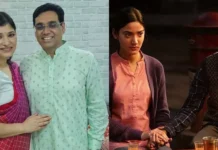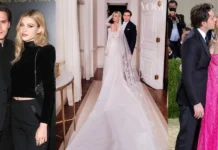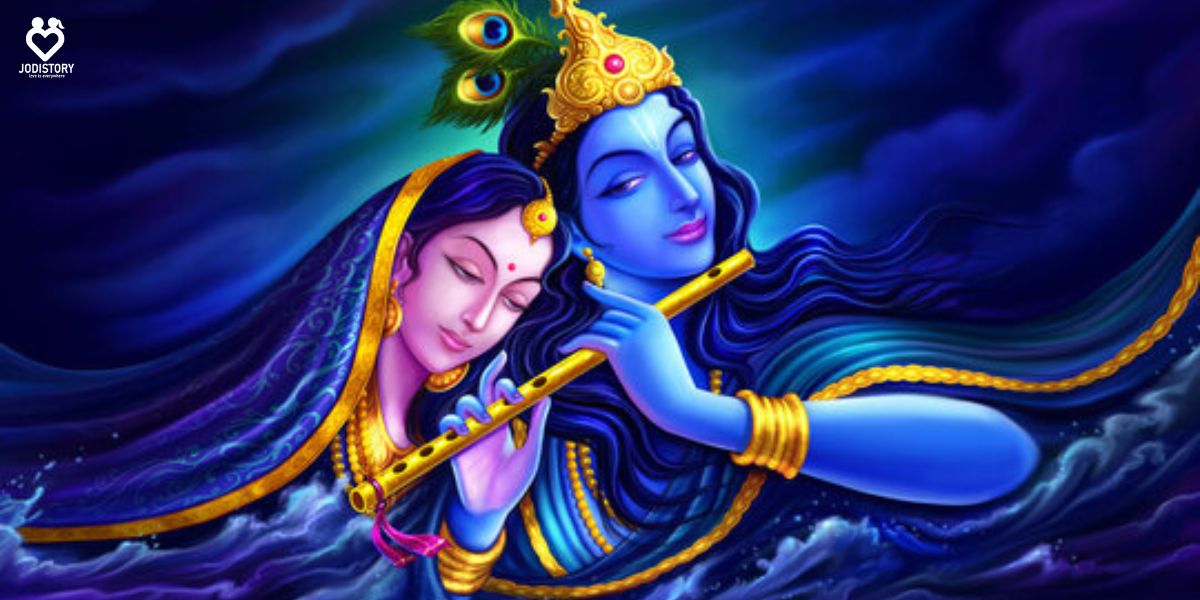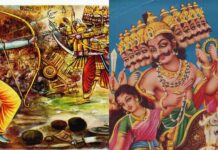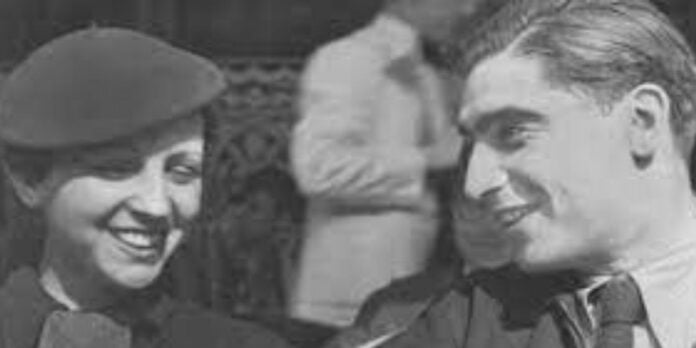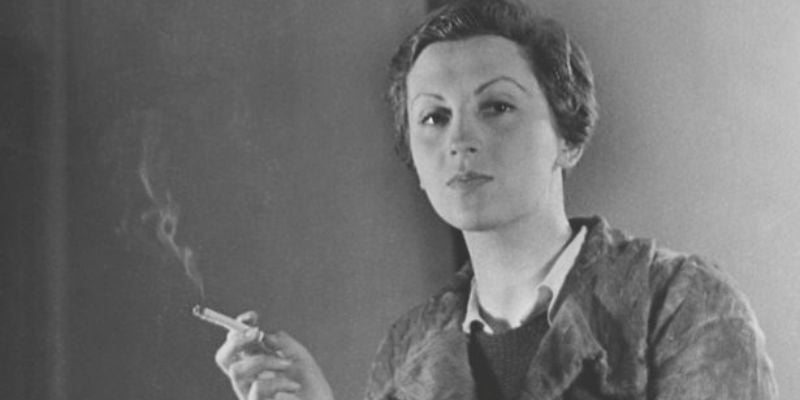In this fast-paced world, certain things are best left unsaid. Holding hands and being your partner’s crutch tells it all. Some stories are concealed in the darkness of the cave, and only a few folks glimpse the light. Each time I take a step, my feet get drenched in lust and vanity. Taro, a song by alt-J, has a particular place in my heart. The beautiful tune of the love story of Robert Capa and Gerda Taro is the showstopper.
A risky fairy-tale love story ended with tears soaking the notebook. Sunflowers blossom all day in movies, yet reality showcases the importance of sunlight.
Who is Robert Capa & Gerda Taro?
Robert Capa (born Andre Ernő Friedmann; October 22, 1913 – May 25, 1954) was a Hungarian-American war photographer and photojournalist who was also Gerda Taro’s lover and professional partner. Some consider him the best combat and adventure photographer in history.
Capa received the Medal of Freedom from American general Dwight D. Eisenhower in 1947 for his efforts photographing World War II. Capa helped co-found Magnum Photos in Paris in the same year.
The company was the world’s first cooperative agency for independent photographers. In his honour, Hungary has produced a gold coin and stamp.
Gerta Pohorylle (August 1, 1910 – July 26, 1937), professionally known as Gerda Taro. She was a German Jewish war photographer who worked throughout the Spanish Civil War.
She is known as the first woman photojournalist to die on the frontlines. Taro was responsible for much of what is credited as Robert Capa’s early work of war.
Beginning of Robert Capa & Gerda Taro’s Relationship
André Friedmann was a struggling Hungarian photographer. He was living in exile in Paris in 1934. André received a commission for working as a promotional photographer.
This was for a Swiss life insurance company’s advertising brochure. In search of potential models, he approached Ruth Cerf. Ruth was a young Swiss refugee.
He approached her in a café on the Left Bank. André encouraged her to pose for him in a Montparnasse park.
Ruth invites along her friend Gerta Pohorylle, a petite redhead with a beguiling smile and a confident demeanor. It was because of her curiosity towards the scruffy young charmer.
Thus, it marks the most famous pairing in photographic history. This also witnessed a complicated tale of radical politics, bohemianism, and daring that has since evolved into a modern myth.
Gerta Pohorylle, was a Jewish refugee. She moved to Paris after being in jail by the Nazis because of her anti-fascist work. The two grew close because Gerta saw the young photographer’s enormous potential.
They fell in love following a summer trip to the south of France. From this point, the untold love story of Robert Capa and Gerda Taro took a turn.
Must Read Love Stories
- Napoleon Bonaparte Love Story: THE EMPORER LOVE
- Adolf Hitler Love Story with Eva Braun- Wild Romance
- Heer & Ranjha Love Story is Really TRUE or NOT?
Why did Robert Capa & Gerda Taro Change Their Name?
Gerta obtained employment at the Alliance Photo Agency. She served as André’s advisor, offering advice and assisting in the sale of his artwork. André on the other hand instructed Gerta in photography.
In 1935, they changed their names to Robert Capa and Gerda Taro. The reason was to appear more marketable and less noticeably Jewish.
Gerta, as Taro, would promote the photographs of “Robert Capa”. The couple saw their opportunity to record history and left for the front lines of the battle a year later. The start of the Spanish Civil War determined whether or not Europe would submit to the danger of fascism.
Robert Capa & Gerda Taro Worked As War Photographers
The work Capa and Taro did in Spain solidified their position as the dominant couple in war photography. Photographers could get closer to the action faster than ever before with the advent of light. It was the portable Leica in the 1920s and 1930s.
Capa and Taro did just that, capturing images of extraordinary intensity and intimacy amidst debris and commotion. Their cameras were omnivorous, taking in both the din of the combat and the children spooning soup.
The couple’s attractiveness, friendliness, and ease among their subjects led to photographs unlike any previously taken during a war. Capa’s photograph of a mother and child leaving their home with their lives packed into a suitcase and Taro’s photograph of soldiers in a rare moment of serenity in a woodland camp.
The iconic works of Robert Capa and Gerda Taro are kept in the archives of the International Center of Photography. Those photographs revealed war as an experience giving visions of the battle.

Death of Gerda Taro left Robert Capa alone in the world
On July 25, the couple became trapped in a foxhole near Brunete as bombs rained down around them. Taro continued to photograph, frequently holding her camera high over her head to capture the horror.
Taro then jumped out of the foxhole and got a ride on the running board of a car while the jets continued to strafe the retreating convoy. During the tumult, the car was slammed by an out-of-control Republican tank, and she was flung into the mud.
Taro took her last breath the next morning of her admission to the hospital. She was 26 years old. Her last words, according to Irene Golden, the on-duty nurse, were, “Did they take care of my camera?”
“Taro” a song by Alt-J: Dedicated to Robert Capa & Gerda Taro
The beautiful melody of this song transports you back to the times of war photographers and lovers Robert Capa and Gerda Taro. Those restless nights, shivering hands, and the terror of never seeing each other delighted so many hearts. Gerda, a female photographer, took her last breath during the Battle of Brunete, while the love of her life died many years later, in 1954, after stumbling on a land mine.
I’d select the last part of the chorus as my favourite lyric in the song:
“Do not spray into my eyes- I have sprayed you into my eyes”
I see Capa on his slushy deathbed on a battlefield, his vision dimming, his final thoughts returning to Taro, and their decision to live their life as war photographers despite the inevitable danger. This ultimate moment of acceptance of fate always melts my heart.
They felt that nothing could pull them apart as long as they were together after surviving an aircraft wreck. Capa finally felt ready to settle down and marry Taro. She, on the other hand, intended to continue her work in wartime photography. She wanted to travel to Spain alone.
Capa could have used Taro’s death as a portent, but he preferred to keep going and take it as an inspiration. In the end, both died doing what they were intended to do, and the irony of death brought them back together.
Must Read Love Stories
- Bhimrao Ambedkar Love Story is Beyond Cast & Religion
- Karuvaki & Ashoka Love Story Prevented War
- Napoleon Bonaparte Love Story: THE EMPORER LOVE
Conclusion
Years have passed, and I’m no longer a teen, but listening to this masterpiece makes me want to run far, far away and explore our real beauty. The only thing that comes to mind is that people are not as different as we usually believe and treat them to be. Cultures are distinct! We are people, and every soul has the same need, and every part of us wants to feel valuable, loved, significant, and dignified.
How beautiful is the diversity, the variations, the simplicity that a chill goes through our veins every time we think of it. In a society where values are being misrepresented on a daily basis, it is always important to look around and remember where everything began, and to never forget that we have two hands: one for helping ourselves and the other for helping others in need.
Yes, love has boundaries; it necessitates respect and kindness. Nothing is unconditional and eternal; we are the ones who make this a part of our soul. In the end, our rusted body remains in the coffin, but we live on in the souls of those we love. We will never forget the untold love story of Robert Capa & Gerda Taro and will keep on inspiring posterity.












